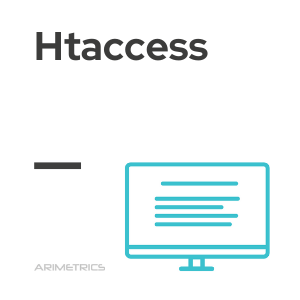
Definition:
A file .htaccess (hypertext access or hypertext access) is a directory-level configuration file supported by several web servers, which is used for site access configuration, such as URL redirection, URL shortening, security access control (by different web pages and files) and more. A site can have more than one .htaccess file and these are placed inside the web tree, i.e. inside the directories and their subdirectories.
What is .htaccess for?
.htaccess files act as a subset of the server’s global configuration file (such as httpd.conf) for the directory in which they are located or all subdirectories. The original purpose of .htaccess, reflected in its name, was to allow per-directory access control, e.g., to require a password to access the content and prevent third parties from attempting to modify our files. In addition, it allows you to implement specific configurations that affect only a given directory, without the need to modify the global configuration of the server.
.htaccess configurations
More commonly, .htaccess files define or suppress many other configuration options, such as content type, character set, CGI handlers, and so on. Some specific settings that can be made include:
- URL redirection: Allows you to redirect users from one URL to another, which is useful for keeping links up to date or for redirecting traffic from deleted pages to new locations.
- Access control: Access to certain files or directories can be restricted by basic authentication or by limiting access to specific IP addresses.
- Custom error settings: Allows you to create custom error pages (such as 404 Not Found) that enhance the user experience by providing useful information when an error is encountered.
- File compression: File compression can be enabled to improve website loading speed, which can improve user experience and SEO.
- Cache settings: Allows you to specify how and for how long browsers should cache files, which can improve site performance.
Considerations when using .htaccess
When working with .htaccess files, it is important to keep a few considerations in mind:
- Configuration Caution: An error in the syntax of the .htaccess file may cause problems in accessing the web site, so it is recommended to make backup copies before making changes.
- Performance: Although .htaccess is a powerful tool, its excessive or incorrect use can affect server performance, as it is processed on every page request. For more complex configurations, it may be preferable to modify the server configuration file directly.
- Server compatibility: Not all web servers use .htaccess; for example, some Windows-based servers use other configuration methods. It is important to check compatibility with the server in use.
